30May
Agronomy Update Winter 2022
Words by Craig Rodgers, Ruralco Group Manager On Farm Sales
The autumn period has produced a more consistent spell of warmer weather than we had for the entire summer period. There were a couple of light frosts with the soil temperature remaining up, although a cold period around the time of writing has noticeably stopped grass growth. Feed surpluses had been good in the early part of autumn and the drier conditions had meant irrigation remained on through mid-autumn. A reduction in soil temperature in early May will mean minimal surplus pasture and feed available heading into winter.
Cereals
We managed to catch up time following the later harvest with the settled weather ensuring autumn sown crops were in and had good establishment and growth. Early indication is that the area of autumn sown cereals may be up on the previous year. We have seen a lift in grain pricing for feed and milling options, for both prompt and contracted grain for next year due to a variety of reasons. With the increase in pricing, we may see further ground put in cereals over the coming months. All wheat varieties seem to be readily available and at the time of writing we were awaiting the 2022 FAR trial results.
Recent AAMI report information indicated a drop in yields as well as harvested cereal area for the 2021 harvest. It is too early to predict how much uncommitted grain there is unsold in the market, but with yield reductions it could be as much as 20% less grain available for the winter and spring markets. There has been some movement of free product post-harvest and we are fielding some enquiry for late winter and spring requirements for both wheat and barley.
Grain prices have increased through May as demand outstrips available supply. Over the past month there has been limited demand from dairy farmers and other end users. There has been some enquiry to lock tonnage in for the spring period, but most movement throughout the past few months has been for contracted grain.
We have seen increased uptake of the use of cereals particularly oats for catch cropping. Supply has been good post-harvest and we are seeing some forward orders for drilling once early transition of winter grazing paddocks are fed. Soil and weather conditions will influence when these are sown directly into bare paddocks, and we are seeing this as a viable option across most of the year now.
Pasture
Pasture renewal has been steady and often weather dependant as we head into late autumn. We are still seeing some late sowings mainly due to early winter grazed crops coming off. As with any crop or pasture, this is all weather dependent. Hopefully if we get an early winter, we will get an early spring. Once the soil temperatures start heading up, it is an appropriate time to plant but this can depend on soil conditions. Some heavier soil types are too boggy to get implements across in early spring and you are better waiting until the days get longer and warmer.
We have seen steady rainfall through autumn, but conditions have remained suitable to all grazing types. As conditions soften, it is important to ensure you protect any newer pastures from stock damage but look to graze them to optimum covers for the winter period. Pastures being grazed immediately following rain can cause damage especially around gateways. Patching these up during winter may not get the desired result so waiting till early spring will be a better option. There are some good options available to help tidy up these areas but ensure you consider what is planned for that paddock in the future. If it is likely to be re-grassed or cropped then a short-term grass or renovation style mix would be suitable, but if it is a well performing or newish pasture then look to spend a little more to ensure it is back performing to its potential.
If you are grazing stock on pastures over the winter period, ensure you carefully choose which paddocks can handle the conditions to ensure you don’t damage too many new or good pastures.
Selection of cultivars is also important and while there can be a variation in pricing the Forage Value Index is a great guide for selecting the grass that will produce best when you need it to. Any grass will look good in the first couple of years, but persistence is where you get the greatest value.
Winter Crops
The measuring and grazing of fodder beet is underway and as usual, the general variety discussion with farmers is revolving around yield, dry matter content and stock suitability. Early weights are showing good results although earlier weighed crops were down on dry matter content. There does not seem to be too much variance across varieties however once full yield assessments are complete, we can analyse what has performed better this year. The transition period remains the most important process of the fodder beet crop and an independent yield assessment is only a guide as crops can vary in size across a paddock. The most accurate estimation is often measured by what the stock are eating or sometimes what they are leaving behind.
Once again, we have seen an increase in kale area this season and crops at this stage are looking very good. Most kale crops had steady rainfall for most of the summer period and have continued to grow through the late summer and autumn. At this early stage there seems to be satisfactory amounts of winter feed available, and these will only increase as we get some frosts which will bring the dry matter percentage up. If some milder weather continues and ground conditions remain favourable the conversion of feed should be high through the early part of winter.
Related
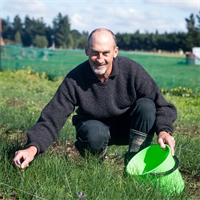
A lifestyle change signaled a return to farming roots for Canterbury Saffron growers Geoff and Jude ...
Read More

Split the payment over three months for larger purchases with Dan Cosgrove, Ensol & FMC.Sim...
Read More
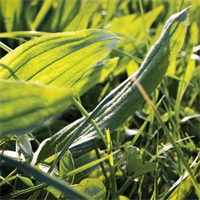
Changing milking frequency from twice a day to once a day or going to 16 hours isn’t hard, but it r...
Read More
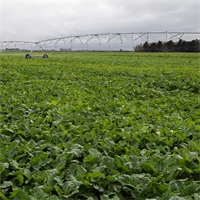
For the next three months we are looking at final sprays for finishing off cereal and grass seed cro...
Read More
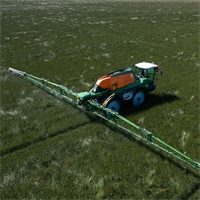
For the next three months we will look at the following: fodder crops, pre-emergence sprays on autum...
Read More
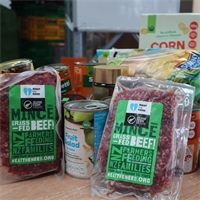
Giving a little is reaping big rewards thanks to a farming initiative aimed at preventing New Zealan...
Read More